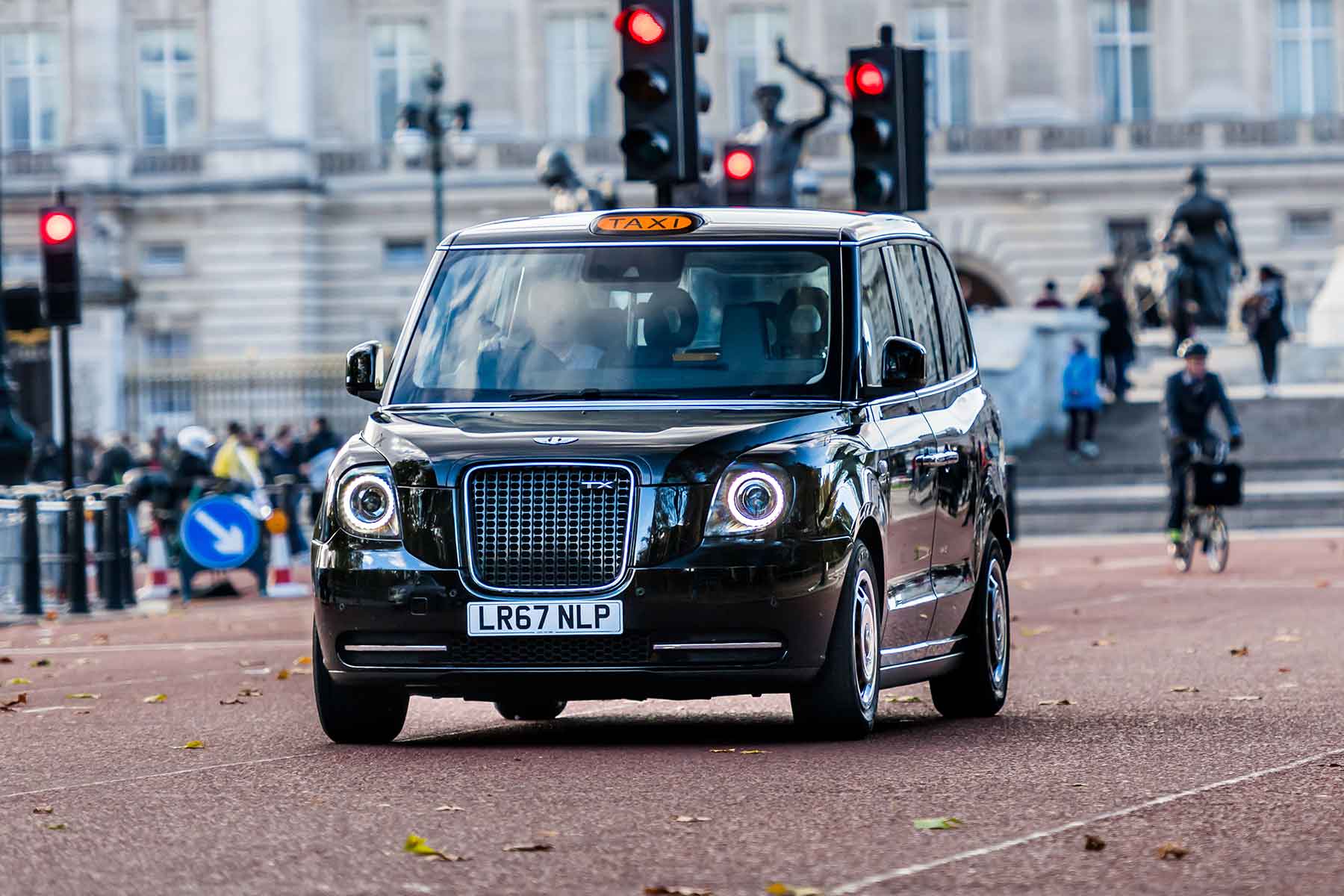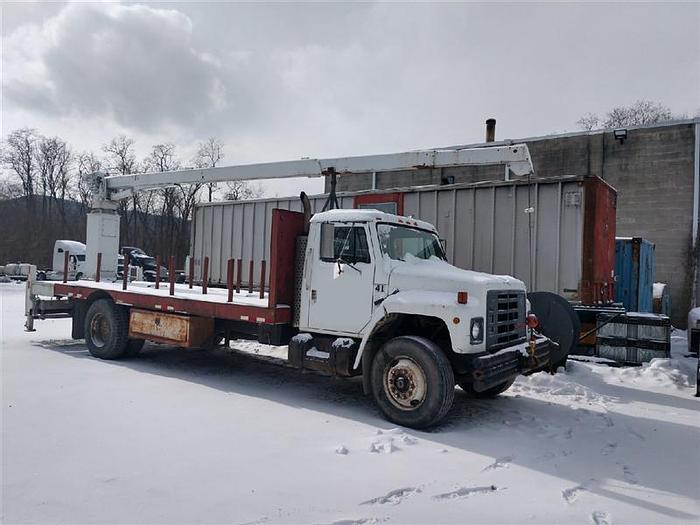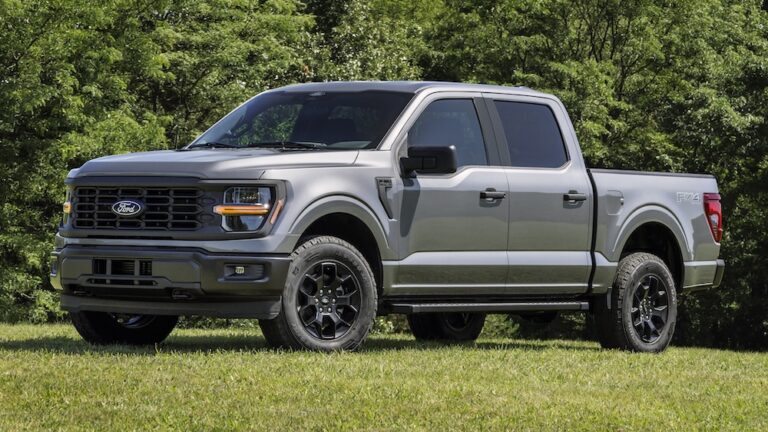The Cab Of A Truck: Your Mobile Command Center and Home on Wheels
The Cab Of A Truck: Your Mobile Command Center and Home on Wheels cars.truckstrend.com
For the uninitiated, a truck is simply a vehicle designed to haul heavy loads. But for those who spend countless hours behind the wheel, navigating highways and byways, the truck is far more than just machinery. At its heart lies the cab – a multifaceted space that serves as a mobile command center, an office, a resting haven, and often, a home away from home. The cab of a truck is where the driver’s world unfolds, a meticulously designed environment where comfort, functionality, safety, and technology converge to enable the demanding profession of trucking. Understanding the intricacies of the truck cab is crucial not just for drivers, but for anyone involved in logistics, fleet management, or simply appreciating the backbone of modern commerce.
I. Anatomy of the Cab: Beyond the Basics
The Cab Of A Truck: Your Mobile Command Center and Home on Wheels
The modern truck cab is a marvel of engineering, optimized for the unique demands of its occupants. It’s a sophisticated ecosystem of controls, comfort features, and safety systems.
- Driver’s Command Center: This is the nerve center.
- Ergonomic Seating: The driver’s seat is paramount. Designed for long hours, it features extensive adjustability (lumbar support, air suspension, heating/cooling, recline) to minimize fatigue and promote good posture. Some high-end seats even include massage functions.
- Steering Wheel and Controls: Beyond just steering, modern wheels integrate controls for cruise control, infotainment, phone calls, and even dashboard navigation, keeping the driver’s hands on the wheel and eyes on the road.
- Dashboard and Instrumentation: A comprehensive array of gauges (speedometer, tachometer, fuel, temperature, air pressure) and digital displays provide critical vehicle information at a glance. Modern dashboards often feature customizable digital screens.
- Pedals and Shifter: While manual transmissions are still common, automated manual transmissions (AMTs) and fully automatic transmissions are increasingly prevalent, simplifying driving and reducing fatigue.

- Sleeper Berth (for Long-Haul): For over-the-road drivers, the sleeper berth transforms the cab into a living space.
- Bedding: Ranging from basic bunks to full-sized mattresses, often with comfortable memory foam.
- Storage: Ample cabinetry, closets, and under-bed storage are essential for personal belongings, clothing, and supplies.
- Amenities: Many sleepers include provisions for a refrigerator, microwave, small television, and even a desk or dining area, making long stretches on the road more bearable.
- Climate Control and Environment: Sophisticated HVAC systems ensure a comfortable temperature regardless of external conditions. Many cabs also feature auxiliary power units (APUs) that power climate control and appliances without idling the main engine, saving fuel and reducing emissions.
- Safety Features: Modern cabs are designed with driver protection in mind. This includes reinforced structures, multiple airbags, advanced seatbelt systems, and clear sightlines through large windshields and mirrors.
II. Types of Truck Cabs: A Diverse Landscape
The design of a truck cab is intrinsically linked to its intended purpose, leading to a variety of types tailored for different operations.
- Day Cabs:
- Description: These cabs are characterized by their compact size and lack of a dedicated sleeping area. They prioritize maneuverability and efficiency for shorter hauls.
- Use Case: Ideal for local deliveries, construction sites, refuse collection, and any operation where the driver returns home at the end of a shift.
- Benefits: Lighter weight (improving payload capacity), shorter wheelbase (better turning radius), lower purchase cost.
- Sleeper Cabs:
- Description: Designed for long-haul, over-the-road (OTR) operations, these cabs feature an integrated sleeping compartment behind the driver’s seat. They vary significantly in size and amenities.
- Types of Sleepers:
- Mid-Roof Sleeper: Offers sufficient headroom for sleeping but might require bending to stand upright. A balance between aerodynamics and comfort.
- High-Roof Sleeper: Provides maximum interior height, allowing a driver to stand up comfortably. These are often preferred for their spaciousness and ability to accommodate more amenities.
- Custom/Extended Sleeper: Some drivers opt for aftermarket custom sleepers that can be significantly larger, sometimes featuring multiple beds, full kitchens, or even bathrooms, creating a true "home on wheels."
- Use Case: Essential for drivers who spend multiple days or weeks on the road, crossing states or even countries.
- Benefits: Allows drivers to rest comfortably on the road, reducing the need for motels, increasing efficiency, and complying with Hours of Service regulations.
- Crew Cabs:
- Description: Primarily found in medium-duty trucks, utility vehicles, or some heavy-duty vocational trucks, these cabs offer additional seating for multiple passengers, typically a second row of seats.
- Use Case: Common for work crews (e.g., construction, utility, landscaping), allowing the entire team to travel together with their tools.
- Cab-Over-Engine (COE) vs. Conventional (Long Nose):
- COE: The engine is located directly beneath the cab. This design offers excellent maneuverability and a shorter overall length, making it popular in regions with strict length limits (like Europe and Asia) or for urban delivery.
- Conventional: The engine is in front of the cab, creating the "long nose" appearance. This design is dominant in North America, offering better ride quality, easier engine access for maintenance, and often superior crash protection.
III. Ergonomics and Driver Comfort: A Mobile Office
The cab is the driver’s primary workspace, and its ergonomic design directly impacts driver well-being, safety, and productivity.
- Adjustability is Key: Seats, steering wheels, and even pedal positions should offer extensive adjustability to accommodate drivers of varying heights and builds. This prevents strain and promotes a natural driving posture.
- Noise and Vibration Dampening: Long-term exposure to engine noise and road vibrations contributes significantly to driver fatigue. Modern cabs employ advanced insulation and suspension systems to create a quieter, smoother ride, reducing stress on the driver’s body.
- Climate Control Excellence: Precise temperature and humidity control are vital. Too hot or too cold, and a driver’s focus can wane. Efficient HVAC systems, often supplemented by APUs, maintain an optimal environment.
- Lighting: Proper interior lighting, including task lighting for reading or paperwork, and subdued night lighting, helps maintain alertness and reduce eye strain.
- Impact on Fatigue and Safety: A comfortable, well-designed cab directly translates to reduced driver fatigue, which is a major factor in truck accidents. By minimizing physical discomfort and mental stress, ergonomic cabs enhance driver alertness and overall road safety.
IV. Technology and Connectivity: The Modern Cab
Today’s truck cabs are hubs of advanced technology, enhancing everything from navigation to communication and safety.
- Infotainment Systems: Large touchscreens integrate GPS navigation (often truck-specific routing), Bluetooth connectivity for hands-free calling, satellite radio, and multimedia playback.
- Telematics and Fleet Management Integration: Cabs are equipped with systems that transmit real-time data on vehicle performance, location, driver behavior, and Hours of Service (ELDs – Electronic Logging Devices). This data is crucial for fleet optimization, compliance, and safety monitoring.
- Advanced Driver-Assistance Systems (ADAS): These technologies are becoming standard:
- Adaptive Cruise Control: Automatically adjusts speed to maintain a safe distance from the vehicle ahead.
- Lane Keeping Assist/Departure Warning: Alerts drivers if they drift out of their lane.
- Blind-Spot Monitoring: Uses sensors to detect vehicles in blind spots.
- Automatic Emergency Braking: Can apply brakes to mitigate or avoid collisions.
- Forward Collision Warning: Alerts drivers to potential frontal impacts.
- Driver Drowsiness Monitoring: Uses cameras to detect signs of driver fatigue.
- Connectivity: Wi-Fi hotspots, multiple USB charging ports, and power outlets ensure drivers can stay connected, manage their business, and enjoy entertainment on the road.
V. Maintenance and Customization: Personalizing Your Space
A truck cab is an investment that requires care, and often, personalization.
- Routine Cleaning and Interior Care: Regular cleaning is essential for hygiene and maintaining the cab’s appearance. This includes vacuuming, wiping down surfaces, and cleaning windows.
- Electrical Systems and HVAC Checks: Periodically inspect all lights, gauges, and ensure the HVAC system is functioning efficiently. Check for any loose wiring or unusual odors.
- Addressing Wear and Tear: Seats, flooring, and interior panels can wear out over time. Promptly addressing minor damage prevents larger, more costly repairs.
- Customization Options: Drivers often personalize their cabs to enhance comfort and functionality:
- Seating Upgrades: Aftermarket seats with more features.
- Lighting: Adding LED strips, mood lighting, or brighter task lights.
- Storage Solutions: Installing custom shelves, organizers, or securing storage bins.
- Appliance Integration: Adding a larger refrigerator, a coffee maker, or an inverter for household appliances.
- Interior Décor: Personal touches like curtains, bedding, or dashboard accessories make the space feel more like home.
VI. Important Considerations When Choosing a Cab
Selecting the right cab is a critical decision that impacts a driver’s daily life and a fleet’s operational efficiency.
- Type of Operation: This is the primary driver. Local deliveries demand day cabs; long-haul mandates sleepers. Vocational trucks might need crew cabs.
- Driver Preference and Comfort: A comfortable driver is a productive and safe driver. Involving drivers in the selection process, especially for sleeper trucks, can significantly boost morale and retention.
- Budget: Cab features directly influence the truck’s price. Higher-spec sleepers with more amenities naturally cost more.
- Resale Value: Certain cab configurations and popular models tend to hold their value better.
- Safety Ratings: Research crash test ratings and the availability of advanced safety features.
- Aerodynamics: For OTR trucks, the cab’s aerodynamic design significantly impacts fuel efficiency. High-roof sleepers often come with aero packages.
Practical Advice and Actionable Insights
For drivers, investing in cab comfort and maintaining its functionality pays dividends in reduced fatigue, improved health, and overall job satisfaction. For fleet managers, choosing the right cab type for the operation, prioritizing ergonomics, and integrating modern technology leads to higher driver retention, better fuel economy, and enhanced safety records. Regular maintenance and strategic upgrades ensure the cab remains a safe, productive, and comfortable environment for its occupants.
Concluding Summary
The cab of a truck is far more than just a cabin; it is the driver’s sanctuary, their mobile office, and the operational core of a commercial vehicle. From the intricate ergonomic design of the driver’s seat to the advanced telematics and safety systems, every element within the cab is meticulously crafted to support the demanding life of a truck driver. As technology continues to evolve, the truck cab will undoubtedly become even more integrated, intelligent, and comfortable, further solidifying its role as the ultimate mobile command center and home on wheels, propelling the global economy forward.
Estimated Price Information for Truck Cabs (as part of a complete truck purchase)
It’s crucial to understand that a "cab" is not typically sold as a standalone unit with a fixed price, but rather as an integral component of a complete truck. The "price of a cab" therefore refers to the additional cost associated with choosing a particular cab type or its features when purchasing a new commercial truck. These figures are estimates and can vary wildly based on truck manufacturer, model, engine, transmission, specific features, market conditions, and whether the truck is new or used.
| Cab Type/Feature | Estimated Additional Cost Range (New Truck) | Key Features & Benefits | Target User/Operation |
|---|---|---|---|
| Day Cab | Included in base price of most short-haul trucks (effectively $0 – $5,000 over a stripped chassis) | Compact, no sleeper, lighter weight, shorter wheelbase, good maneuverability. Focus on utility and quick in-and-out access. | Local deliveries, port drayage, construction, refuse, dump trucks, yard spotters. Drivers return home daily. |
| Mid-Roof Sleeper | $15,000 – $35,000 (above day cab cost) | Integrated sleeping bunk (often single), standing room (bent over), basic storage. Balance of aerodynamics and driver comfort. | Regional haul, some long-haul where height restrictions are a concern, or drivers prefer a more compact sleeper. |
| High-Roof Sleeper | $30,000 – $60,000+ (above day cab cost) | Full standing height, often larger bunks (double options), ample storage, space for appliances (fridge, microwave, TV). Maximum comfort for extended living. | Long-haul, over-the-road (OTR) operations, team drivers, drivers who spend weeks away from home. |
| Custom/Extended Sleeper | $70,000 – $150,000+ (aftermarket addition, on top of truck cost) | Highly customized, can include full kitchens, bathrooms, multiple living areas. Built to driver’s exact specifications. | Owner-operators seeking a true "home on wheels," highly specialized operations, show trucks. |
| Crew Cab | $5,000 – $15,000 (above standard day cab) | Additional row of seating for 3-4 extra passengers, often found in medium-duty chassis. | Utility companies, construction crews, service vehicles, fire departments. |
| Premium Interior Package | $5,000 – $15,000+ | Upgraded seating (leather, heated/cooled), enhanced sound insulation, premium infotainment, wood/chrome accents, ambient lighting. | Drivers prioritizing luxury and comfort, fleets aiming for high driver retention. |
| Advanced Driver-Assistance Systems (ADAS) | $3,000 – $10,000+ (per system/package) | Adaptive Cruise Control, Lane Departure Warning, Blind Spot Monitoring, Automatic Emergency Braking. | Fleets prioritizing safety, regulatory compliance, reduced accident rates. |
| Auxiliary Power Unit (APU) | $10,000 – $18,000 | Provides power for HVAC and appliances without idling main engine, saving fuel and reducing emissions. | Long-haul drivers, fleets focused on fuel efficiency and environmental compliance. |
Disclaimer: These are broad estimates. The actual cost will depend on the truck manufacturer (e.g., Freightliner, Kenworth, Peterbilt, Volvo), specific model, chosen engine and transmission, and a multitude of other options and market dynamics. For precise pricing, always consult with a truck dealership.
Frequently Asked Questions (FAQ) about The Cab Of A Truck
Q1: What is the primary difference between a "day cab" and a "sleeper cab"?
A1: A day cab is designed for short-haul operations where the driver returns home daily and does not have an integrated sleeping compartment. A sleeper cab includes a dedicated sleeping area behind the driver’s seat, essential for long-haul drivers who spend multiple days or weeks on the road.
Q2: Are all truck cabs the same size and layout?
A2: No, cabs vary significantly. Day cabs are compact, while sleeper cabs range from mid-roof to high-roof, offering different levels of standing room and amenities. There are also crew cabs for additional passengers and variations like Cab-Over-Engine (COE) versus Conventional (Long Nose) designs.
Q3: How important is ergonomics in a truck cab?
A3: Extremely important. Proper ergonomics, including adjustable seating, steering, and pedal positions, along with good climate control and noise reduction, significantly reduce driver fatigue, prevent musculoskeletal issues, and enhance overall safety and productivity.
Q4: What are ADAS features in a truck cab?
A4: ADAS stands for Advanced Driver-Assistance Systems. These are technologies like Adaptive Cruise Control, Lane Keeping Assist, Blind-Spot Monitoring, and Automatic Emergency Braking, designed to assist the driver, prevent accidents, and improve safety on the road.
Q5: Can I customize my truck cab?
A5: Absolutely! Many drivers personalize their cabs with upgraded seating, custom storage solutions, improved lighting, and additional appliances (like larger refrigerators or microwaves) to enhance comfort and make the space feel more like home.
Q6: What is an APU and why is it important for a truck cab?
A6: An APU (Auxiliary Power Unit) is a small, independent engine that powers the truck’s HVAC system, lights, and appliances when the main engine is off. It’s crucial for long-haul drivers as it allows them to maintain comfort without idling the main engine, saving fuel, reducing emissions, and complying with anti-idling regulations.



